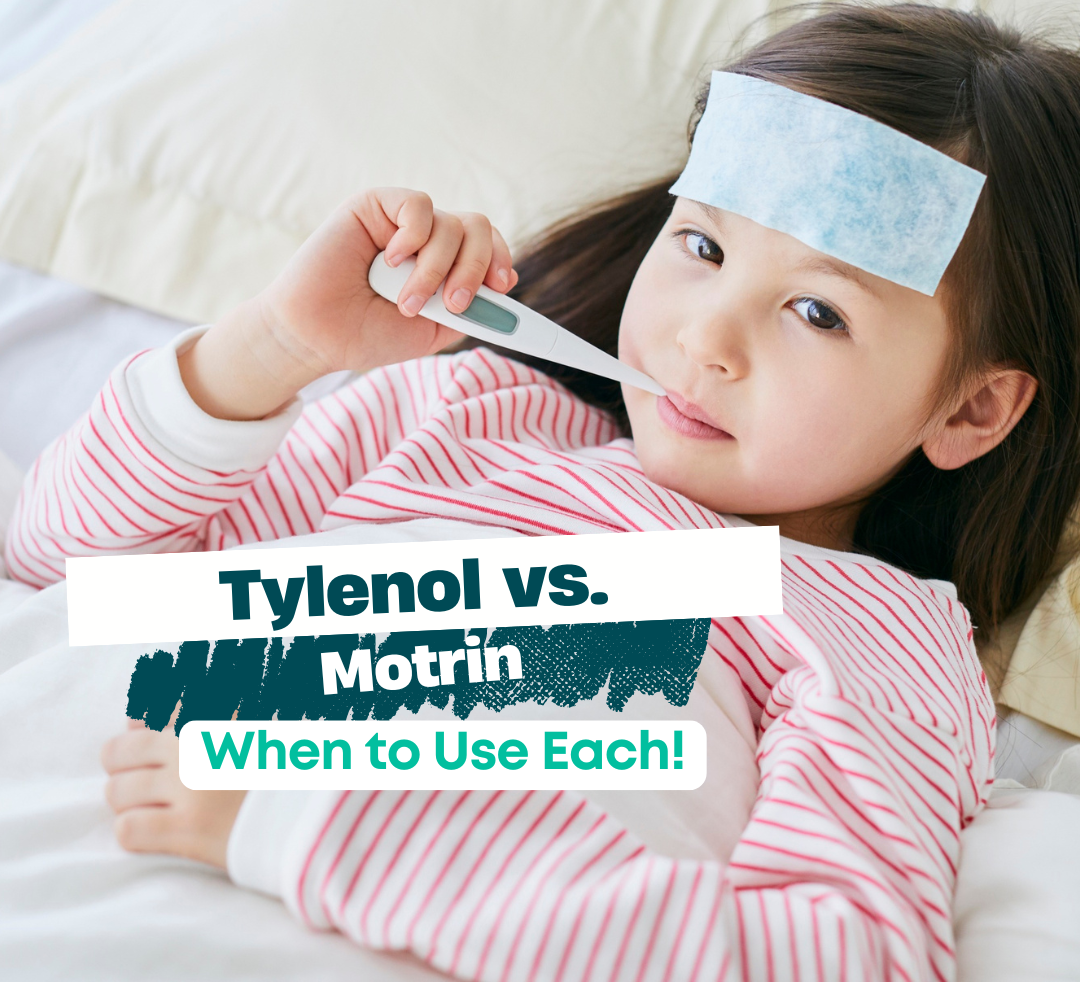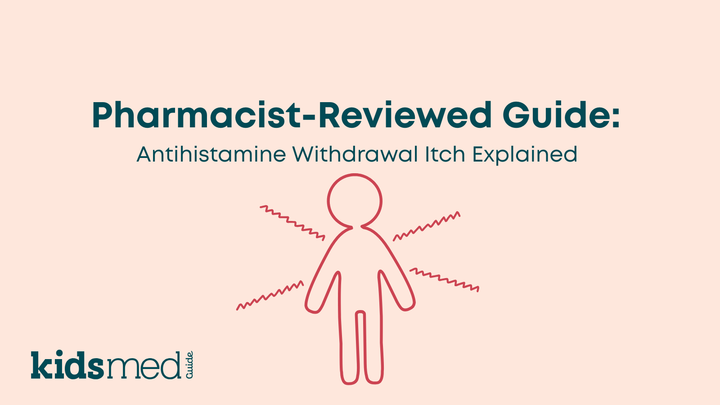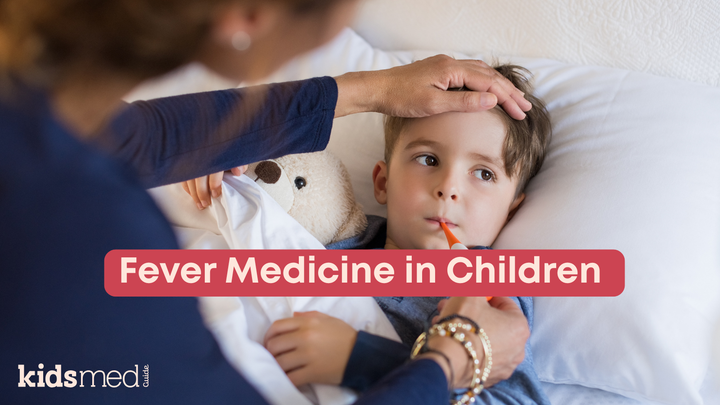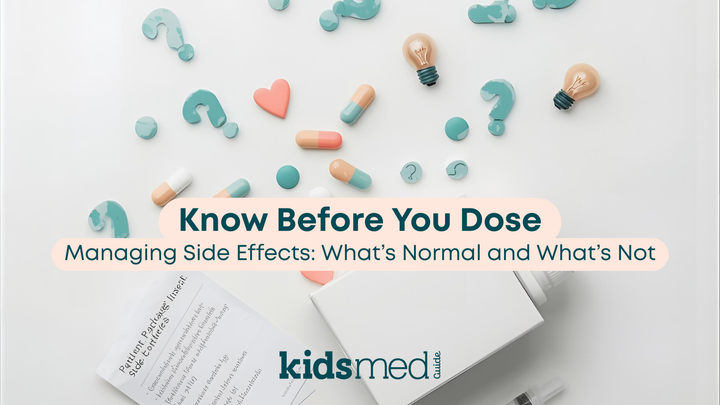Tylenol vs. Motrin: When to Use Each

When your child has a fever, is in pain, or just feels crummy (that's the official medical term for yuckiness in kids), you’re likely reaching for Tylenol® (acetaminophen) or Motrin® (ibuprofen). But what’s the difference? Is one better? Can you alternate them? Do you even need them?
Here are some key facts to consider when choosing between products.
Meet the Meds
Tylenol (Acetaminophen)
- Reduces fever and relieves mild to moderate pain
- Works in the brain to block pain and temperature signals
- Can be used every 4–6 hours (maximum 5 doses per day)
- Safe for infants over 2 months old (note: fever in infants under 3 months of age should always be referred to the pediatrician)
Motrin (Ibuprofen)
- Reduces fever, pain, and inflammation
- Works at the site of inflammation (like sore throats, swollen gums)
- Lasts longer (every 6–8 hours) (maximum 4 doses per day)
- Only approved for infants 6 months and older
When to Choose Tylenol
- Your child is under 6 months old
- They have stomach sensitivity or a history of ulcers
- Your child has an empty stomach (Tylenol is easier on the stomach and can be taken with or without food)
When to Choose Motrin
- Your child has inflammation or swelling (e.g., teething, ear infections, sprains)
- You need longer relief (for example, overnight)
- Your child is 6 months or older and well-hydrated (ibuprofen is a little rougher on the kidneys, and good hydration is extra important)
Can You Alternate?
Yes—sometimes pediatricians recommend alternating Tylenol and Motrin every 3 hours for high fevers or persistent pain. But only do this under medical guidance and keep a detailed log to avoid double-dosing.
Important Safety Notes
- Always use the correct measuring device (no kitchen spoons!)
- Read labels carefully—many cold meds already include acetaminophen
- Never exceed daily max doses
- Call your pediatrician if the fever lasts more than 3 days, or for any fever in an infant under 3 months of age
- Call your pediatrician for high fever (guidelines vary by doctor, but typically over 104 degrees F)
- Call your pediatrician or seek emergency care for severe pain or fever with severe symptoms such as trouble breathing, hallucinations, or lethargy (difficult or unable to arouse child)
- If your child has an allergy to either drug or either drug class, do not use that medication
- If your child has a fever but is otherwise comfortable and able to eat, drink, and rest, you may not need to use Tylenol or Motrin. Sometimes, fever can be helpful and is a regular part of being sick. Fewer meds are always better in kids! Consult your pediatrician for guidance.
Final Thoughts
Both Tylenol® and Motrin® are safe and effective when used properly. Choosing the right one depends on your child’s symptoms, age, and what works best for them. When in doubt, ask your pediatrician—or your friendly neighborhood pharmacist 😄
The following references were used to compile this information:
DailyMed—ACETAMINOPHEN liquid. (n.d.). Retrieved June 4, 2025, from https://dailymed.nlm.nih.gov/dailymed/drugInfo.cfm?setid=ace5ebac-ec11-4c26-b1e3-954b450ee671
DailyMed—CHILDRENS MOTRIN- ibuprofen suspension. (n.d.). Retrieved June 4, 2025, from https://dailymed.nlm.nih.gov/dailymed/drugInfo.cfm?setid=f2609308-17bf-4bcb-84b2-d17f3fd35958
Fever. (2016, January 11). HealthyChildren.Org. https://www.healthychildren.org/English/health-issues/conditions/fever/Pages/default.aspx
Pitone, M. L. & MD. (n.d.). Fever Symptoms & Treatment (for Parents) (for Parents). Retrieved June 4, 2025, from https://kidshealth.org/en/parents/fever.html
Wade, K. C., & Mathis, C. (2024). Antipyretic Strategies: Is Fever Clearance Enough to Justify Dual Therapy? Pediatrics, 154(4), e2024067408. https://doi.org/10.1542/peds.2024-067408



